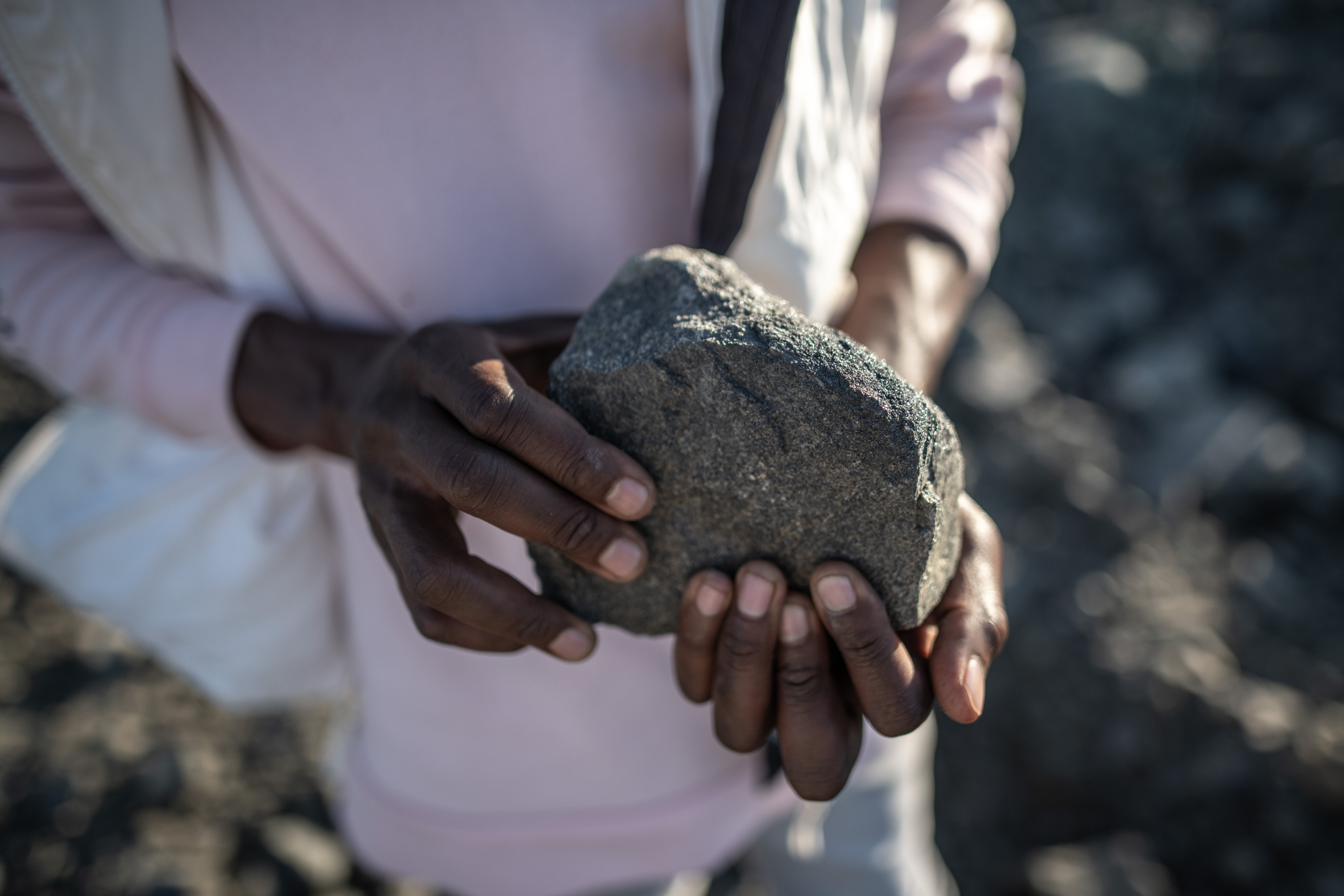
- Chinese demand for chromium to make stainless steel is fuelling illicit mining in South Africa that scars the land and divides communities
Twenty-five years ago, to get to school in the morning, Godfrey Molwana would walk more than 3km from his home in Witrandjie, a small village in South Africa.
His route passed through communal grazing lands for cattle and goats – a rolling expanse of acacia trees and hardy shrubs, interspersed with the corn plots of subsistence farmers. Some families had graves on the land.
“This area was for everyone,” Molwana recalled.
Close to the village lay the remains of a chrome mine, with derelict buildings and dumps of discarded ore where children from the community would play. Chrome is essential for manufacturing stainless steel.

South Africa has the largest deposits in the world, but this mine, no longer profitable, had been closed for decades. Some older men in the community had worked there as labourers, earning the low wages designated for black people during the apartheid era.
The ground beneath the village was rich, but its residents had remained in poverty, even after white rule ended, in 1994.
How Hong Kong ‘battlefield’ scarred by developers is restoring its wildlife
Then, in the mid-2000s, a new market for chrome arrived in Witrandjie. It began with a company that bought the old mine dumps and hauled them away for reprocessing. Later, more outsiders showed up, promising lucrative payouts for villagers who allowed the establishment of new mines.
Here, it appeared, was an opportunity to profit directly from mining, an industry that had contributed greatly to the dispossession of black South Africans in the past. Excavators moved onto the grazing area, and cargo trucks departed with massive loads of ore.
I met Molwana, who is now 37, at his family’s home on the edge of Witrandjie last year. He led me towards the new mines, which were obscured from view by a hillock of debris. We scrambled over it into a wasteland.
In every direction lay giant mounds of gravel and rock, haphazardly strewn, as if the landscape had been shelled. The tallest dumps were more than eight storeys high.
The claws of digging machines swung across the horizon amid a disorientating cacophony of noise: diesel engines, reversing trucks, rock thudding into trailers. We walked further, passing worked-out pits and deep trenches – lifeless scars in the ground, with no warning signs or fences.

Molwana had cautioned me that it was unsafe to get closer. The miners, working illegally, were hostile to people they perceived as threats. So we took an eroding path back towards Witrandjie, winding among more heaps of discarded rock.
The trail led to a flooded pit several times the size of an Olympic swimming pool, with a sheer cliff at the far end stretching upwards some 18 metres (60ft). Visible above the edge were the roofs of houses.
This particular mine had been dug right beside the village and then abandoned; the entire process, Molwana said, had taken only a few weeks.
In the past decade, chrome mining has devolved into brutal disorder. Witrandjie’s leaders are powerless to stop the advance of the machines, and the villagers have grown mistrustful and fearful of one another, with turf wars and gang involvement driving a rise in violence.
Thousands of tonnes of material are being trucked away daily, vanishing into an unaccountable export market for chrome ore – part of an insidious and highly lucrative new illicit economy in South Africa.
The land has been turned upside downGaudupe Mpodi, Witrandjie’s village headman
By far the world’s largest chrome producer, the country is now thought to lose around a 10th of its annual production this way, according to ChromeSA, a local industry body. Analysts say the true figure is likely to be even higher.
“It’s crime organised on a major level,” says Paul Miller, director of AmaranthCX, a local mining consultant.
“It is a hopeless task quantifying the thousands of different applications,” noted a 2018 scholarly article on the stainless-steel industry. Each of these supply chains can be traced back, potentially, to an illicit chrome mine in South Africa.
In Witrandjie, home to fewer than 2,000 people, it has become common for 70 cargo trucks, each carrying 50 tonnes (55 tons) of ore or more, to be loaded in a single day.
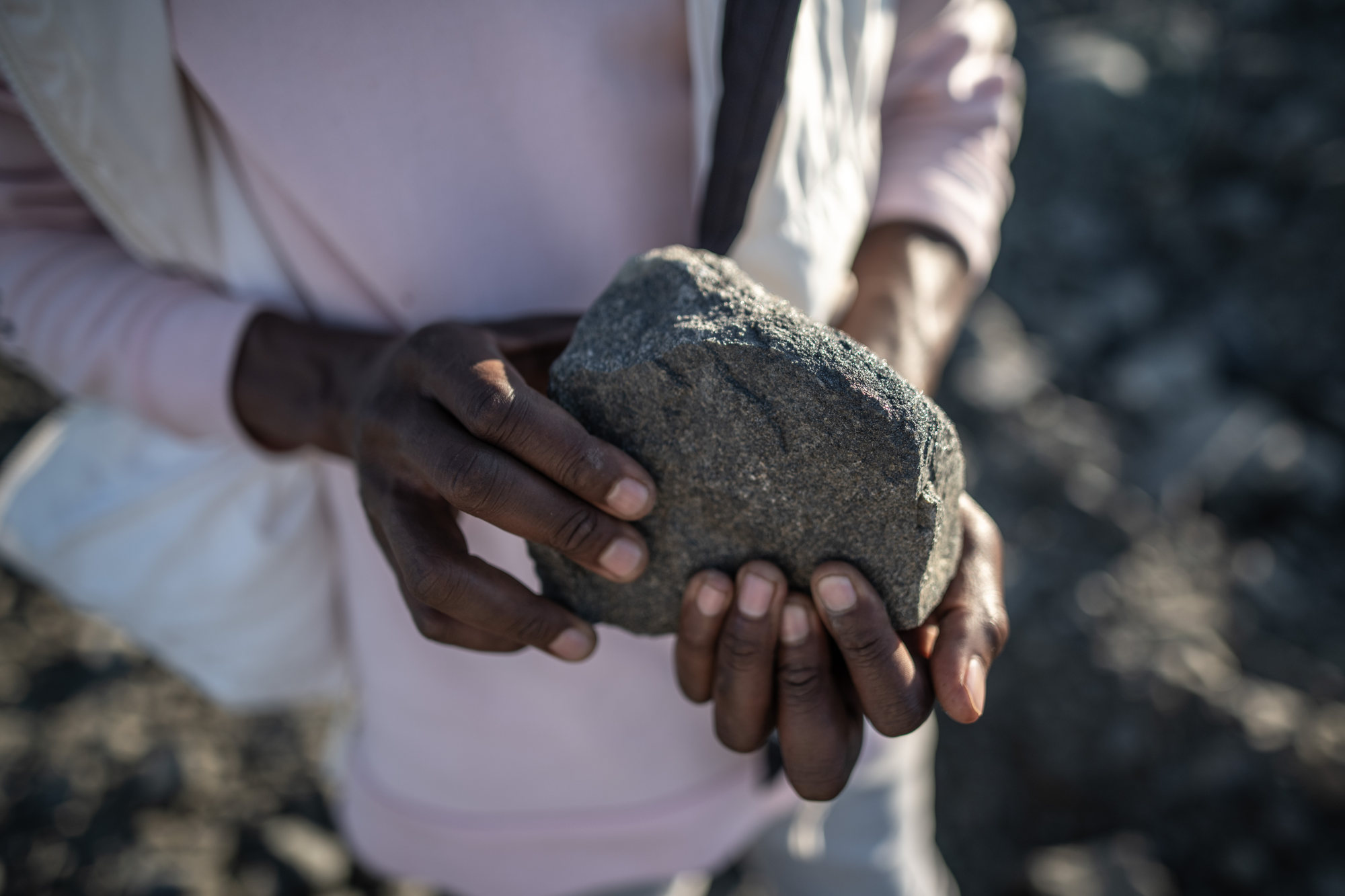
“The land has been turned upside down,” Gaudupe Mpodi, the village headman, said in a local television interview in 2020. Satellite imagery captured since then shows the mines spreading across the plain, churning the earth; their footprint is now larger than the village itself.
As Molwana and I exited the old grazing area, some young children in school uniforms were returning from the neighbouring village, walking on a gravel road next to the mines.
Excavators and trucks thundered by, lifting clouds of dust. The roar of machinery was unabating and would go on all night.
We are living in an age of chrome. Of the 40 million tonnes mined globally each year, more than three-quarters is used to make stainless steel, a material that, since its invention, in 1913, has shaped the modern world. Stainless steel is cheap, strong and rust-resistant.
Figures from Worldstainless, a non-profit organisation in Brussels, show that demand has roughly doubled over the past 15 years, driven primarily by urbanisation in China. Today, on average, the world produces almost two tonnes of stainless steel every second.
‘The first Chinese chief in Africa’, but does he wield any real influence?
By weight, from 10 to 30 per cent of stainless steel is made up of chromium, a metallic element that occurs in nature as dark, flinty crystals. The ore in which it is typically found is called chromite but is often referred to simply as chrome.
South Africa’s deposits formed more than 2 billion years ago, when floods of magma squeezed out from the Earth’s mantle and slowly cooled, creating a basin the size of Ireland.
Named the Bushveld Igneous Complex, this rock formation has the shape of a broken horseshoe about 320km (200 miles) wide, with two curving limbs that descend towards deeper reefs. It is exceptionally rich in minerals, including the world’s largest reserves of platinum-group metals and about 70 per cent of the world’s chrome.
Witrandjie lies on the western edge of the platinum belt, as the region is colloquially known, not far from where chrome mining began in South Africa, in the early 1920s.
How dams in China are destroying livelihoods downstream in Cambodia
South Africa, already the world’s leading gold producer, had invested heavily in mining, which formed the basis of the national economy. Rather than exporting chrome ore, which was bulky and of relatively low value, the country developed its own refineries and stainless-steel plants.
Processing this ore requires crushing and grinding it into a fine powder before smelting it at 1,650 degrees Celsius (3,000 degrees Fahrenheit) or hotter, consuming huge amounts of electricity.
In the post-war decades, South Africa had some of the cheapest electricity in the world, enabling a rapid expansion in smelting capacity.
This was during the apartheid era, when black South Africans were denied access to basic human rights, and skilled jobs were reserved for the white minority.
Black people were also prohibited from owning or leasing land outside so-called homelands – territories that were nominally independent, organised into tribal groupings defined by white anthropologists and governed by leaders sympathetic to the apartheid regime.
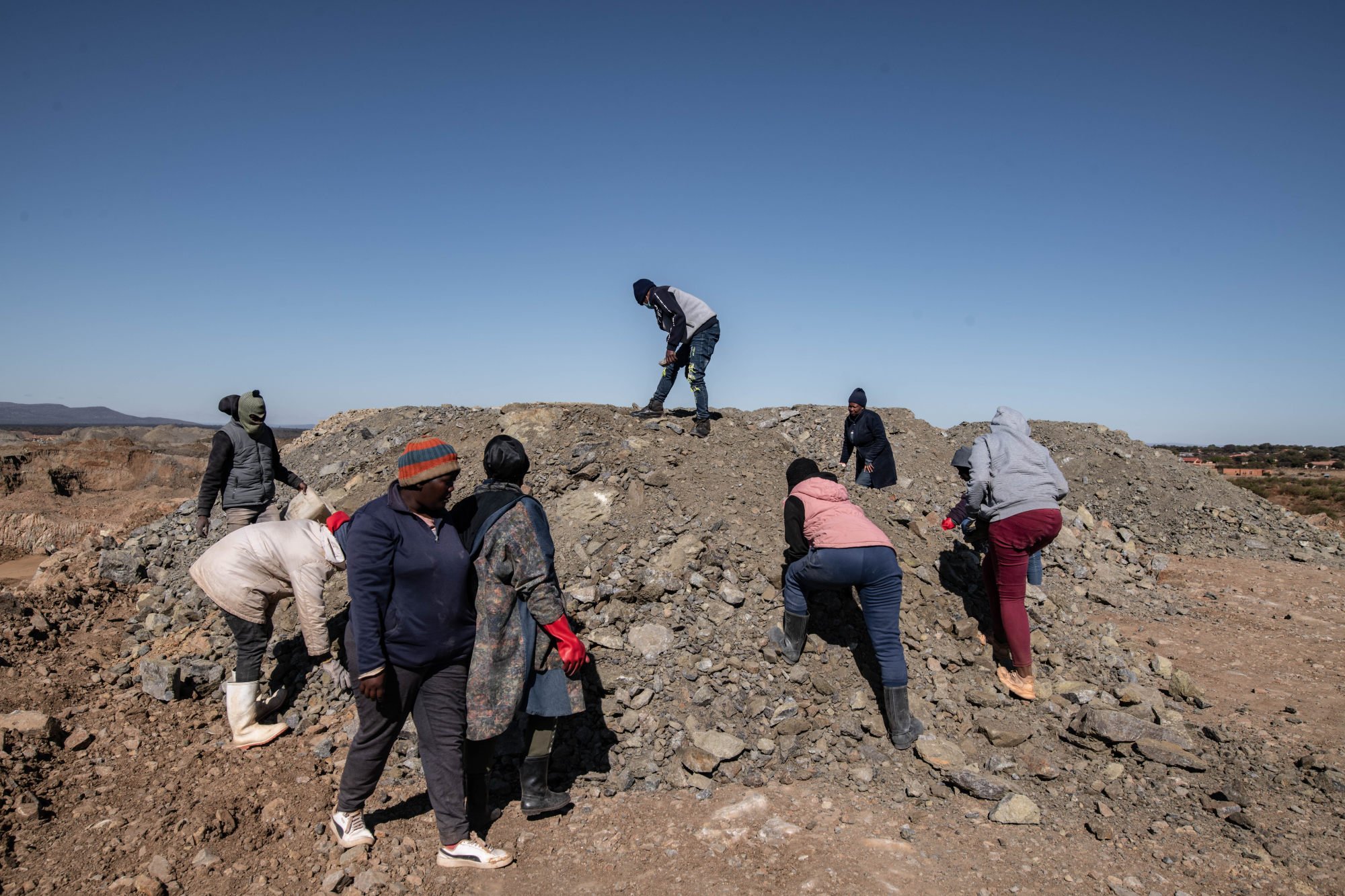
Making up 13 per cent of the country, homelands were impoverished and under-resourced, a source of migrant workers who lived for much of the year in white areas and had to carry documents that functioned as passports. Children and the elderly remained behind, surviving on remittances and subsistence agriculture on land that was often badly overgrazed.
Witrandjie formed part of one such homeland, the Republic of Bophuthatswana. (No country aside from South Africa recognised this designation.) As in other tribal areas, much of the land was communally owned and fell under the authority of traditional leaders.
Diners at risk: how Asian appetites for abalone foster crime in South Africa
When apartheid ended in the early 1990s, international trade sanctions on South Africa were lifted and the mining industry saw an increase in foreign investment. Chrome production rose, but then a series of changes flipped the industry on its head.
In the 2000s, the national power utility, Eskom, plagued by mismanagement and corruption, descended into crisis, introducing rolling blackouts.
Short on electricity, the government raised tariffs and began paying chrome smelters to shut down. (At their peak, chrome refineries accounted for 5 per cent of South Africa’s electricity budget.)
At the same time, China was undergoing the biggest construction boom in history and needed almost limitless amounts of stainless steel. To meet demand, the country rapidly developed its own production facilities.
In 2000, China manufactured about 5 per cent of the world’s stainless steel; it now produces more than half. China also developed the capacity to process lower grades of chrome, formerly considered economically unfeasible.
The further away [chrome] moves from the mine site, the cleaner and more legitimate it becomesPaul Miller, director of AmaranthCX, a South African mining consultant
This created a market for South African ore that in the past had been simply left in the ground or discarded as a by-product of platinum mining. Bulk exports of unwrought ore increased dramatically.
Before the energy crisis, South Africa smelted about 90 per cent of its chrome domestically; today about 90 per cent is exported in raw form. This change created opportunities for both legitimate businesses and illegal miners.
“People with nefarious goals took the gap,” says Rodney Jones, a chrome smelting expert at South Africa’s Council for Mineral Technology.
Last July, I checked into a room at Sun City, which in the post-apartheid era has become popular with South Africans of all races. The resort has the feel of a theme-park African palace, with gigantic elephant sculptures, a chlorinated wave pool and buildings clad in fake rock. Starlings invaded the buffet each morning, making off with cubes of cheese.
The property borders a mountainous game reserve offering hot-air-balloon safaris and luxury lodges; in the other direction, beyond the security gates, lie the dusty settlements of the platinum belt.
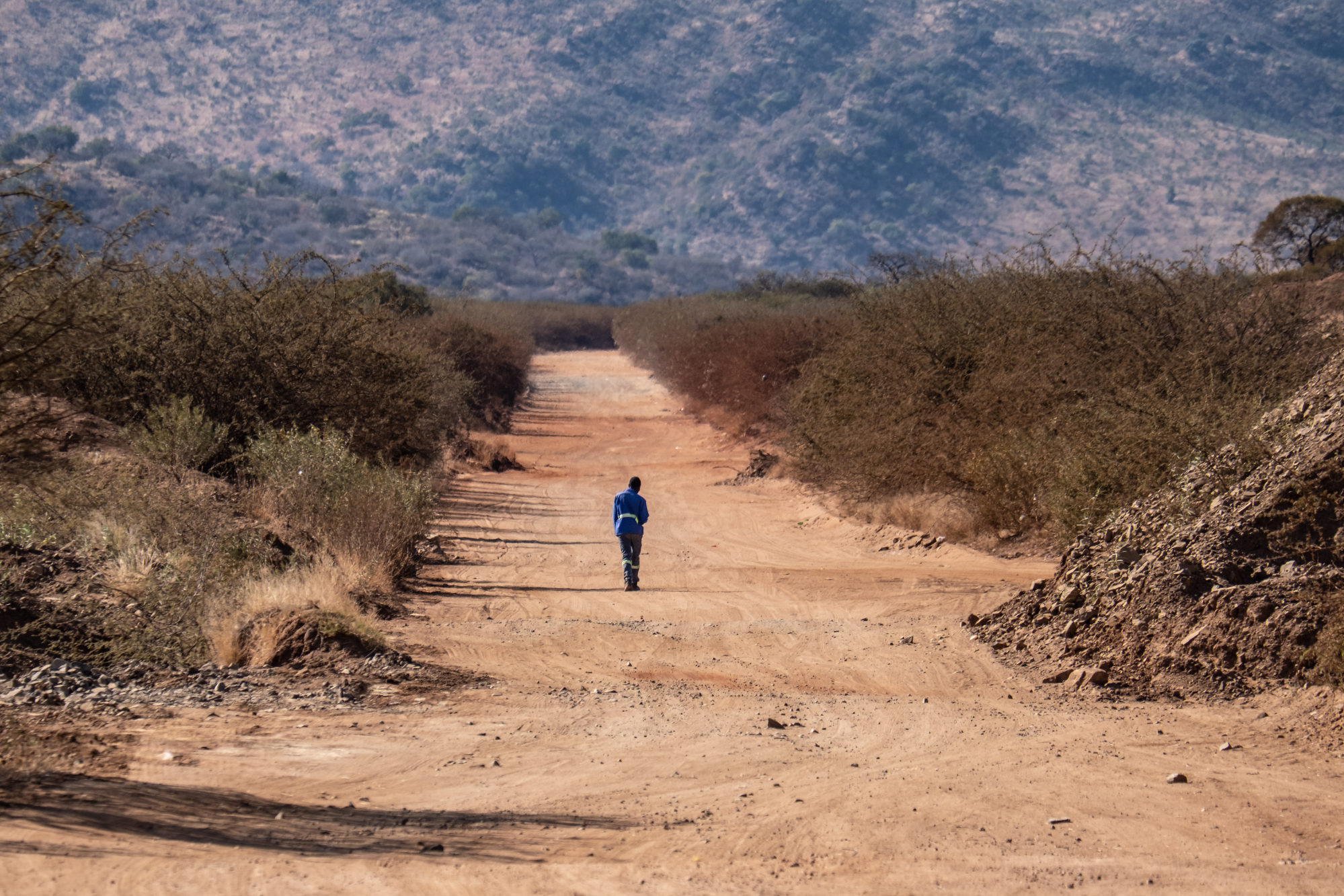
Trucks laden with chrome barrel up and down a road that has been ravaged by the excess freight. At the turn-off to Witrandjie, every day I visited, two thin boys with shovels were filling in potholes and begging passing motorists for tips.
The village is accessible only by cratered dirt roads that pass by the new mines. When it rains, these roads become impassable and buses become trapped in the mud.
Most of the houses in Witrandjie are small and cramped, with many being renovated piecemeal, as money comes and goes. Chickens and goats nose through rubbish on the streets. Roadside shacks serve offal and maize meal.
But compared with other South African rural communities, there are also incongruous signs of wealth. Some homes have been transformed into compounds, with gleaming stainless-steel fixtures and expensive cars secured behind automatic gates.
Many also have earth-moving equipment outside, making clear the source of the money.
‘The white man’s waste’: why fast fashion is burying African beaches
Chrome mining has enriched a minority, but the entire village has borne the costs: dust that blows into homes, 24-hour noise, a sense of encroaching danger.
Two years ago, while scavenging ore that had been left behind by the machines, two men were crushed to death in a rockfall. Another two men from the village died in a mining accident this March. A young boy from the neighbouring village fell into a flooded pit and drowned. Tractors have hauled out dead cattle and goats.
One afternoon, I met a young man who described himself as a mine owner. He had a silver tooth and wore stylish leather shoes coated in mud, and he requested anonymity because of the illicit nature of his business.
Years earlier, he had worked as a cleaner at a nearby platinum mine, earning a few hundred dollars a month. When he found out how much profit the mine was generating, “it hurt”, he recalled.
He had also been a member of a local youth gang. When chrome mining took off, they moved in on the pits. An informal system had evolved under which outsiders, known as “investors”, would offer locals 30 per cent of the proceeds from mining in exchange for access to the land. But because this land was communal, ownership was contentious.
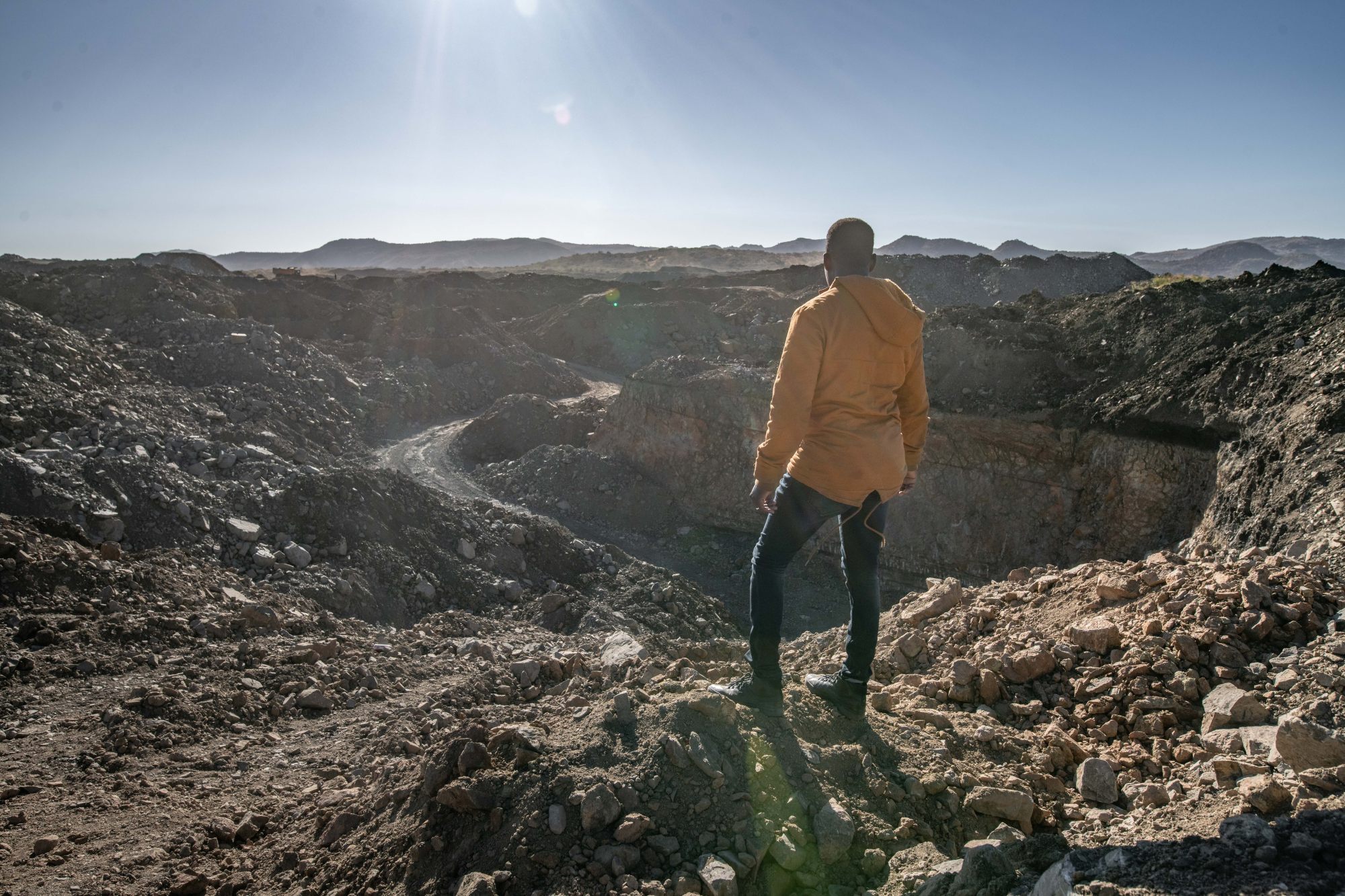
Some families claimed tenure over certain portions dating back generations, but there was so much uncertainty over land rights – another consequence of apartheid policy – that such claims were difficult to adjudicate.
As time passed, access increasingly became governed by force.
“As a community member, this is my place,” the mine owner said. He had quit his cleaning job and now boasted of having police station commanders in his pocket.
He took me to one of the five pits he controlled, each mined by a different investor. It was a bare, stony hole in the ground, about 18 metres across, surrounded by other pits and mounds of waste rock.
A broken excavator lay at the bottom. The owner was waiting for his investor to repair it. His job was defending the mine from rival diggers and gangs.
How dams in China are destroying livelihoods downstream in Cambodia
“Everybody’s protecting their pit,” he told me.
Sustaining the entire operation were two thin bands of chromite located about 10 metres below the surface.
The area’s geology is highly complex, broken up by an ancient volcano that thrust upwards through the mineral deposits, scrambling the otherwise orderly layers. This topography means miners can’t reliably dig to a certain depth to find ore and must continually excavate instead.
Some pits produce nothing; the miners abandon them and move on.

They are a diverse group – white, black, Chinese – with connections and access to capital. They sell their chrome to international traders and are fluent in the language of ore grades and treatments.
Their operations have a veneer of legitimacy, thanks to loopholes in South African mining law.
In 2002, the government introduced policies that included lighter regulations for small-scale operators. It was now possible to apply for permits to mine modest plots of land without providing detailed environmental impact assessments, thereby reducing the administrative burden and cost.
These permits, intended for low-volume operations such as sand mines and small quarries, were soon being used for chrome pits.
Investors could establish large mines far beyond their permitted boundaries, and if officials visited the sites, locals could produce the requisite documentation. Any transgressions would be treated as a civil, not criminal, matter.
Not your usual C-pop queen: meet South African singer Eli Zaelo
And because inspectors could easily be paid off, penalties were usually light, if they were levied at all.
Some mine owners in Witrandjie received permits, and a few local sites have the appearance of formal mines, with boom gates and rusting wire fences. But many locals, including the mine owner with whom I spoke, didn’t bother.
As I spent more time in the village, I learned that many people felt, as he did, that the land and its minerals were theirs to profit from. Only a few had been able to connect with investors.
People kept waving me over and trying to sell me land. One evening, I gave a lift to a shy Mozambican man who was walking home from the mines, where he operated a front-end loader for less than US$500 (HK$4,000) a month.
When I dropped him off, he said, “So, sir, you don’t have machines?”
The Maoist film that wowed the West after premiering at Venice Film Festival
From Witrandjie the chrome trucks head south towards Johannesburg, passing a series of rudimentary processing plants that have sprung up across the platinum belt. These facilities are fitted with spiral columns that use gravity to separate chrome from other minerals, producing a grey-black concentrate.
Predominantly owned by white entrepreneurs, the plants are poorly regulated.
Many of the trucks proceed to City Deep, an industrial area in Johannesburg with container stacks, railway sidings and miles of warehouses – the largest dry port in Africa. The chrome is offloaded there at specialised logistics terminals for bulk ore and prepared for export.
There are at least 10 of these terminals, some the size of a half-dozen or more soccer pitches, with towering mounds of ore awaiting collection and onwards freight.
At this level of the supply chain, there is no distinction between legally and illegally mined material; it is all just a commodity to be freighted in bulk. “The further away it moves from the mine site, the cleaner and more legitimate it becomes,” says AmaranthCX’s Miller.

Last year he led an operation just north of Witrandjie, at a legal mine that had been invaded by illegal miners. Whenever mine security intervened, people from the nearest village would protest and shut down roads.
These residents were benefiting from what the mine saw as theft; from their perspective the illegal miners weren’t thieves but agents of an overdue justice, recovering stolen land.
For five years, the mining company had no choice but to put up with the digging, until one day in May 2022, when military helicopters flew in low over the hills as police and security guards encircled the perimeter.
A ringleader attempted to flee, ramming his pickup truck through a gate before being captured in a shoot-out. Three suspects were wounded.
How failure of ‘Germany’s China City’ reflects EU’s changing view of Beijing
Prosecutors are hoping to use this case, which has yet to begin court proceedings, as a model for combating illegal chrome mining in the future. But in Witrandjie the most noticeable effect of the nearby raid has been an uptick in illegal digging, a consequence of displaced diggers moving southward with their machines.
Pressure is rising on the chrome fields. Already, beatings and brawls are common – “almost every day”, the young mine owner told me. Armed guards have been brought in to defend pits, many of them Congolese immigrants who hang around the village in bulletproof vests.
In 2020 a young miner known as Bobby, who was affiliated with a local gang, was gunned down at a tavern in a dispute over chrome. “It’s no longer safe,” another mine owner said.
I met several times with the Witrandjie traditional council, ostensibly in charge of local governance, at its headquarters, a bare brick building with an outhouse of pit latrines.
When apartheid ended, core elements of the tribal administration system remained intact, preserving the power of traditional leaders. During our meetings, the council explained to me how it had lost all control of chrome mining.
Why South Africa-born Mrs Hong Kong became Chinese
“To them we’re like snitches,” one council member said. “It’s dangerous,” another added.
They had held community meetings but had been shouted down by mine owners. The headman, Mpodi, had been taunted in the streets. The council had filed multiple complaints with the authorities, but whenever a raid took place, the illegal miners were tipped off and removed their machines.
There were also signs that more powerful forces were at play. In 2021 officials confiscated several excavators and tipper trucks from one mining site, only to be informed that the owner had permission from Mpodi’s superior, the tribe’s kgosi, or chief, who lived in a different village.
Aninka Claassens, a customary law expert at the University of Cape Town, has described South Africa’s former homelands as a “shadowland” of unaccountable traditional powers. This situation has undermined democracy in rural communities, placing residents at the mercy of unelected officials.
It has also been the cause of violent conflicts over land rights.

I wasn’t able to speak with the kgosi, who has since been deposed in a family power struggle, but I later found out that Witrandjie’s council had granted permission for the first mines, after all.
Its leaders were later accused of stealing chrome profits intended for community development. When I went back to Mpodi about this, he didn’t deny it and told me he had returned the money.
With the council’s legitimacy tainted, a free-for-all ensued. “Nobody respects them,” a woman in the village said, “because they started all of this.”
After the mines have been emptied of chrome, there will be ruin: lifeless earth, with no money for rehabilitation.
I went to an area not far from Witrandjie that had been dug up and abandoned. Here and there, among the pits, people were scratching for leftover ore.
Why the party’s over for Chinese venture capitalists in Silicon Valley
One group was using trowels and a screwdriver to work out small pieces of rock; several of them had worked at Sun City but then been laid off. “It’s because of hunger,” they said of their activity.
They’d assembled neat piles of chrome and were waiting for a buyer. A single pile, which took two or three days to collect, would earn them less than US$10 each.
For those who have been left out of the chrome rush in Witrandjie, this future – a degraded and marginal landscape – might be preferable to the present. I met an elderly woman named Esther Thalitha Phiri whose home lies on the edge of the chrome mining area.
Growing up, her four children had played freely behind the house. Phiri was employed as a domestic worker in Johannesburg and returned home one weekend a month; in her absence, her father-in-law had taken care of the children.
When he died, the family buried him nearby, on the grazing lands. His grave was recently dug up by chrome miners. “There was nothing left,” Phiri recalled, breaking into a howl. “Not even one bone.”

Since then her home has become unliveable. The ground shakes at night. Trucks come and go at all hours. Her young grandson is unable to sleep for days on end and complains of splitting headaches.
When I visited, there were four giant front-end loaders and three tipper trucks just beyond her fence. A burly white man was pouring fuel into a drum. He had travelled to Witrandjie from the eastern limb of the platinum belt, where illegal chrome mining was just as rampant.
He worked for a man who rented out machines. In a trench nearby some chrome pickers were gathering rock. “Someone’s going to get hurt,” he said, watching them scramble below us.
A week earlier, Phiri had pleaded with him to stop the digging behind her home. To her surprise, he had filled in the trench and flattened the mounds. “What’s happening is terrible,” he said. But there was still chrome in the ground, still stainless steel to be made.
The next day another group of miners dug the land open again, and now the trench was deeper than before.
